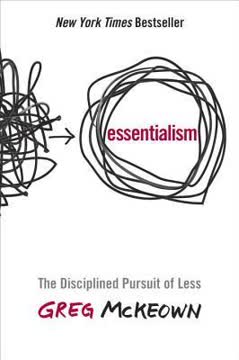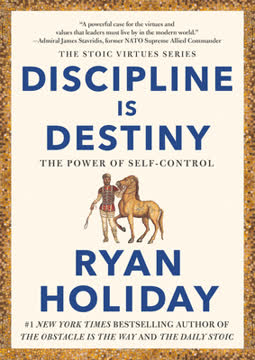Key Takeaways
1. The Complex Sale: Navigating Changing Buyer Dynamics
A meteor shower of change is hitting the world of selling, and many salespeople find themselves and their deals spinning out of control.
Evolving sales landscape. The traditional sales model is being disrupted by several factors:
- Product commodification: Shorter product lifecycles require differentiation through extended solutions
- Disintermediation: Elimination of middlemen in certain markets
- E-commerce: Changing the role of salespeople
- Customer relationship management: Requiring new strategies and tools
- Business partnering: Necessitating new sales models and collaboration
Adapting to change. Salespeople must:
- Reengineer personal careers to bring greater value to clients
- Move from coercive relationships to collaborative problem-solving
- Develop deeper understanding of clients' businesses and industries
- Embrace continuous learning and adaptation
2. R.A.D.A.R.: A Framework for Simplifying Complex Sales
R.eading A.ccounts and D.eploying A.propriate R.esources.™
Six keys to winning complex sales:
- Link Solutions to Pain (or Gain)
- Qualify the Prospect
- Build Competitive Preference
- Determine the Decision-Making Process
- Sell to Power
- Communicate the Strategic Plan
Benefits of the R.A.D.A.R. process:
- Increases competitive advantage through consistent execution
- Provides early detection of blind spots
- Prioritizes urgent vs. important tasks
- Improves ability to control and manage multiple accounts
- Develops respect with peers and management
3. Link Solutions to Pain: Understanding and Addressing Client Needs
If you want little dollars, solve little problems; if you want big dollars, solve big problems.
Types of pain/benefits:
- Operational: Efficiency, functionality, integration
- Cultural: Employee morale, teamwork, innovation
- Financial: ROI, cost reductions, revenue gains
- Political: Recognition, promotion, risk mitigation
- Strategic: Competitive advantage, market share, survival
Effective pain linkage:
- Understand both professional and personal agendas
- Connect features to benefits using the "So what?" test
- Focus on strategic benefits for executive-level buyers
- Make invisible costs visible and politically painful
- Create urgency by quantifying the cost of inaction
4. Qualify Prospects: Allocate Resources Wisely
How you qualify depends on how many opportunities you have and how many resources you have available.
Key qualification questions:
- Is this good business for anyone?
- Is this a winnable opportunity for us?
- How does it compare to the rest of my opportunities?
Qualification considerations:
- Relative qualification: Based on pipeline and available resources
- Budget indicators: Not always binary; strategic opportunities may transcend budgets
- Demand creation vs. demand reaction: Different qualification processes
- Intangible qualifications: Brand-name customers, industry penetration, strategic value
Balancing act: Qualification isn't quitting. Find the balance between positive mental attitude and critical thinking. Develop a process for telling in advance which deals to pursue and which to avoid.
5. Build Competitive Preference: Positioning and Differentiation
It is many times easier to help someone make up their mind in the first place than it is to change it.
Building preference strategies:
- Position early: Be the first to sculpt a vision of leadership or solution
- Benefits mapping: Connect capabilities to individual and organizational benefits
- Influence issues: Suggest capabilities and buying criteria that favor your strengths
- Steer the process: Add steps that highlight your strengths or competitors' weaknesses
- Identify influencers: Focus resources on powerful individuals early
Ethical competitive selling:
- Stay on the high ground: Avoid mentioning competitors directly
- Focus on your strengths and unique differentiators
- Anticipate and neutralize competitor strategies
- Build rapport and trust before discussing competitive issues
6. Determine the Decision-Making Process: Mapping Power and Influence
They don't decide how to decide until they can't decide.
Understanding decision dynamics:
- Algebraic democracy: Some votes count more than others
- Two-tiered decisions: Project team selection followed by executive decision
- Participation vs. consensus: Buy-in doesn't always mean agreement
Mapping the decision process:
- Identify decision makers, approvers, gatekeepers, and influencers
- Understand the roles and relative power of each stakeholder
- Determine voting or selection mechanisms
- Identify sources of urgency driving the decision timeline
Strategic implications: The more you understand about the decision-making process, the more effective your strategy and resource allocation will be.
7. Sell to Power: Accessing and Influencing Key Decision Makers
People can be influenced to do what you want if you can show how it gets them what they want.
Sources of influence:
- Reciprocity: Building networks through favors and gratitude
- Performance: Demonstrating competence and success
- Common goals/enemies: Aligning agendas
- Ideas and innovations: Bringing creative solutions
- Social capital: Leveraging relationships and networks
- Integrity and dependability: Building trust over time
Power mapping strategies:
- Identify visible and invisible power structures
- Understand the dynamic nature of power relationships
- Borrow influence to gain access or information
- Build your own personal network within the industry
8. Communicate the Strategic Plan: Aligning Team Efforts
Luck favors the man in motion.
Elements of an effective strategic plan:
- Clear objectives: Measurable and date-driven goals
- Dynamic strategy: Approach to achieve objectives
- Flexible tactics: Day-to-day actions to execute strategy
- Critical testing: Challenge assumptions and anticipate obstacles
- Execution and feedback loop: Refine based on new information
Benefits of strategic planning:
- Aligns team efforts and empowers execution
- Provides a framework for absorbing new information
- Enables faster decision-making and adaptation
- Improves forecast accuracy through better account control
9. Time-Based Sales Strategies: Adapting to Changing Issues
Speed of information drives speed of strategy drives competitive advantage.
Changing issues over the sales cycle:
- Early: Focus on product/solution fit and capabilities
- Middle: Risk and implementation concerns rise
- Late: Price becomes a factor again
Strategic implications:
- Adapt messaging and focus based on the phase of the sale
- Anticipate and prepare for shifts in buyer priorities
- Use time-based strategies to accelerate or delay decisions to your advantage
- Prepare for counterattacks and last-minute competitor moves
Early detection: Seek and process new information quickly to refine strategies and tactics. Don't avoid bad news; use it to improve your plan or reallocate resources.
10. Navigating to C-Level: Effective Executive Engagement
In order to make things happen in the complex sale, we have to get out of our comfort zone and into the power zone.
Strategies for executive access:
- Start at the top when possible to avoid going over heads
- Find reasons for lower-level contacts to take you higher
- Leverage executive sponsorship from satisfied clients or partners
- Use professional associations and industry networks
Effective executive engagement:
- Demonstrate strategic literacy: Understand and speak to high-level concerns
- Provide outside expert perspective: Offer benchmarks and best practices
- Help prepare for the future: Bring ideas and innovations
- Create a vision of value: Link solutions to strategic pains and gains
- Differentiate your offering: Show why you're the best choice
- Seek ongoing sponsorship: Build lasting relationships
Last updated:
FAQ
What's "Hope Is Not a Strategy" about?
- Complex Sales Focus: The book by Rick Page is a guide to mastering complex sales, emphasizing that hope alone is insufficient for success.
- Strategic Process: It introduces a strategic process called R.A.D.A.R. to simplify and win complex sales.
- Integration of Best Practices: The book combines consultative, competitive, political, and team selling into a cohesive strategy.
- Sales Evolution: It addresses the evolution of sales from product-focused to solution-oriented and partnership-based approaches.
Why should I read "Hope Is Not a Strategy"?
- Practical Insights: The book offers practical insights and strategies for sales professionals dealing with complex sales scenarios.
- Comprehensive Approach: It provides a comprehensive approach to understanding and navigating the complexities of modern sales.
- Real-World Examples: The book includes anecdotes and examples from various industries to illustrate key concepts.
- Skill Development: It helps in developing skills necessary for consultative and competitive selling, crucial for today's sales environment.
What are the key takeaways of "Hope Is Not a Strategy"?
- R.A.D.A.R. Process: The book outlines a six-step process to manage complex sales effectively.
- Linking Solutions to Pain: Understanding and addressing the client's pain points is crucial for successful sales.
- Building Competitive Preference: Establishing preference with decision-makers is essential for winning sales.
- Selling to Power: Identifying and influencing key decision-makers can significantly impact sales outcomes.
What is the R.A.D.A.R. process in "Hope Is Not a Strategy"?
- Reading Accounts: It involves understanding the client's needs and pains to tailor solutions effectively.
- Deploying Resources: The process emphasizes the strategic allocation of resources to maximize sales effectiveness.
- Six-Step Framework: R.A.D.A.R. includes steps like linking solutions to pain, qualifying prospects, and building competitive preference.
- Simplifying Complexity: The process aims to simplify the complex sale by providing a structured approach to sales strategy.
How does "Hope Is Not a Strategy" define competitive advantage?
- Three Categories: According to Michael Porter, competitive advantage falls into low-price, value differentiation, or niche focus.
- Arsenal of Advantage: The book identifies six major sources of competitive advantage, including company strength and product differentiation.
- Value Linkage: Linking competitive advantages to client needs is crucial for creating value and preference.
- Strategic Benefits: Emphasizing strategic benefits over tactical ones can lead to larger, more profitable deals.
What are the "Ten Laws of Team Selling" in "Hope Is Not a Strategy"?
- Different Levels Require Different Skills: Selling at different levels requires distinct methodologies and talents.
- Right People in Right Jobs: It's crucial to have the right talent in the right roles for effective team selling.
- Client Intimacy: Building strong client relationships is essential for successful team selling.
- Resource Allocation: Resources should be allocated based on how the customer buys, not just on sales potential.
How does "Hope Is Not a Strategy" address the decision-making process?
- Understanding the Process: Knowing the client's decision-making process is vital for accurate strategy development.
- Algebraic Democracy: The book describes decision-making as a process where some votes count more than others.
- Two-Tiered Decisions: It highlights scenarios where decisions are made in stages, involving different levels of authority.
- Sources of Urgency: Identifying the client's urgency is crucial for accurate forecasting and closing deals.
What role does "Selling to Power" play in "Hope Is Not a Strategy"?
- Identifying Power Holders: Recognizing who holds power in an organization is essential for influencing decisions.
- Building Influence: The book emphasizes building influence with powerful individuals to gain competitive advantage.
- Reciprocity and Trust: Building trust and reciprocity with decision-makers can lead to successful sales outcomes.
- Mapping Influence: Understanding the shadow organization chart helps in navigating the political landscape of a sale.
What are the "Sixteen Opportunity-Level Sales Strategies" in "Hope Is Not a Strategy"?
- Preemptive Strategies: These involve winning the battle before it starts by creating demand or aligning with power partners.
- Frontal Strategies: Direct approaches work when there is clear product or company superiority.
- Flanking Strategies: These involve changing issues, power, or processes to gain an advantage.
- Timing Strategies: Adjusting the pace of the sales process can be crucial for gaining a competitive edge.
How does "Hope Is Not a Strategy" suggest handling changing issues in sales?
- Time-Based Strategy: Sales strategies should adapt to the changing importance of issues over the sales cycle.
- Risk and Price: As decisions near, risk and price become more significant issues for clients.
- Commodification: The book warns against commodification and emphasizes maintaining differentiation.
- Counterattacks: Preparing for competitor counterattacks is essential for securing a sale.
What is the importance of "Account Management" in "Hope Is Not a Strategy"?
- Transition from Opportunity Management: The book highlights the shift from competitive selling to repetitive selling.
- Building Trust: Establishing trust and delivering on promises is crucial for repeat business.
- Proactive Strategy: Account management involves a proactive approach to influence preferences and processes.
- Inoculating Against Competition: Building loyalty and integrating solutions can protect against competitive intrusion.
What are the best quotes from "Hope Is Not a Strategy" and what do they mean?
- "Hope is not a strategy." This emphasizes the need for actionable plans rather than relying on optimism alone.
- "People buy from people—people with solutions." It highlights the importance of personal relationships and problem-solving in sales.
- "The customer is always right." This underscores the need to align sales strategies with customer needs and preferences.
- "Luck favors the man in motion." It suggests that proactive and dynamic strategies lead to success in sales.
Review Summary
Hope Is Not a Strategy receives positive reviews for its practical insights into complex B2B sales. Readers appreciate its enduring relevance, focus on targeting qualified leads, and strategies for deal-making. The book's RADAR approach and analysis of buyer personalities are highlighted as valuable tools. While some find it a rehash of familiar concepts, many consider it a must-read for sales professionals. The book is praised for its applicability to various sales contexts and its focus on the politics of complex sales.
Similar Books










Download PDF
Download EPUB
.epub digital book format is ideal for reading ebooks on phones, tablets, and e-readers.




